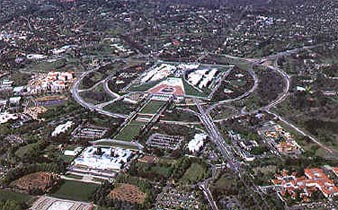
Multi-language Translation Service
You can entrust your multi-language translation needs to us and be assured of that your projects get delivered on time. We are experienced in assisting agencies with translation and typesetting so that designers can concentrate on just design.

Translation for Visa Applications
We regularly provide translation documents required for immigration purposes in Australia. Get a quote, confirm the price is right, and receive your NAATI certified Persian translation by post. We also translate all personal documents required for legal purposes.

Technical Translation and Localisation
Get the right Persian translator experienced in translating specialised technical material. Translation localisation involves a comprehensive study of the target culture in order to correctly adapt the product to local needs. As such, not all Persian translators may be suitable for your translation needs. We take care to choose only the right Persian technical translator suitable for each project.

Persian Medical Translation
Medical translation are made only by translators qualified in this field. Therefore we use only translators who are medical doctors or have long term training in the medical field. We provide translation for:
- medical articles, patient documents (informed consensus)
- information on patients, medical letters, medical sheets, hospital discharge notes
- medical receipts, medical prospectus
- user guides for medical personnel and patients
- manuals and presentation booklets for medical equipment
- medical questionnaires
- clinical, pharmacology, biology studies
- medical questionnaires
- text in any other medical specialty

Business Translation
Business or legal translation assignments, big or small, are treated with meticulous care and confidentiality. Our Persian translators provide translation and proofreading for:
- Business proposals
- Research papers
- Minutes, emails, business correspondence
- Annual reports
- Financial statements
- Formal letters, legal documents
Translation for Canberra
If you need translation services based anywhere in Australia, contact us for a quote. We are able to provide quick turn-around times at very reasonable rates. Australia Post service is able to deliver hard-copy translations for our clients within 1-2 working days.
NAATI Certified Persian Translation
We provide professional translation services for the Persian language.
Our certified Persian translators provide translation for:
- academic transcripts
- business and legal contracts
- birth certificates
- brochures for print or web
- drivers license (except for use in NSW)
- death certificate
- passports
- restaurant menu
- scientific or research documents
- technical and engineering papers
- marriage certificate
- medical documents
Canberra

Canberra is the capital city of Australia. With a population of 358,000, it is Australia's largest inland city and the eighth-largest city overall. The city is located at the northern end of the Australian Capital Territory (ACT), 280 km (170 mi) south-west of Sydney, and 660 km (410 mi) north-east of Melbourne. A resident of Canberra is known as a "Canberran".
The site of Canberra was selected for the location of the nation's capital in 1908 as a compromise between rivals Sydney and Melbourne, Australia's two largest cities. It is unusual among Australian cities, being an entirely planned city. Following an international contest for the city's design, a blueprint by the Chicago architects Walter Burley Griffin and Marion Mahony Griffin was selected and construction commenced in 1913. The Griffins' plan featured geometric motifs such as circles, hexagons and triangles, and was centred around axes aligned with significant topographical landmarks in the Australian Capital Territory.
The city's design was heavily influenced by the garden city movement and incorporates significant areas of natural vegetation that have earned Canberra the title of the "bush capital". The growth and development of Canberra were hindered by the World Wars and the Great Depression, which exacerbated a series of planning disputes and the ineffectiveness of a sequence of bodies that were to oversee the development of the city. The national capital emerged as a thriving city after World War II, as Prime Minister Robert Menzies championed its development and the National Capital Development Commission was formed with executive powers. Although the Australian Capital Territory is now self-governing, the federal government retains some influence through the National Capital Authority.1
More About The Persian Language
Persian is an Iranian language within the Indo-Iranian branch of the Indo-European languages. Persian, the more widely used name of the language in English historically, is an anglicized form derived from Latin *Persianus < Latin Persia < Greek Πέρσις Pérsis, a Hellenized form of Old Persian Parsa. According to the Oxford English Dictionary, the term Persian as a language name is first attested in English in the mid-16th century. Native Iranian Persian speakers call it Fârsi. Farsi is the arabicized form of Pârsi, due to a lack of the 'p' phoneme in Standard Arabic (i.e., the 'p' was replaced with an 'f').
In English, this language is historically known as "Persian", though some Persian speakers migrating to the West continued to use "Farsi" to identify their language in English and the word gained some currency in English-speaking countries. "Farsi" is encountered in some linguistic literature as a name for the language, used both by Iranian and by foreign authors. According to the OED, the term Farsi was first used in English in the mid-20th century. The Academy of Persian Language and Literature has declared that the name "Persian" is more appropriate, as it has the longer tradition in the western languages and better expresses the role of the language as a mark of cultural and national continuity. Most Persian language scholars such as Ehsan Yarshater and Kamran Talattof have also rejected the usage of "Farsi" in their articles.
Since the nineteenth century, Russian, French and English and many other languages have contributed to the technical vocabulary of Persian. The Iranian National Academy of Persian Language and Literature is responsible for evaluating these new words in order to initiate and advise their Persian equivalents. The language itself has greatly developed during the centuries.
